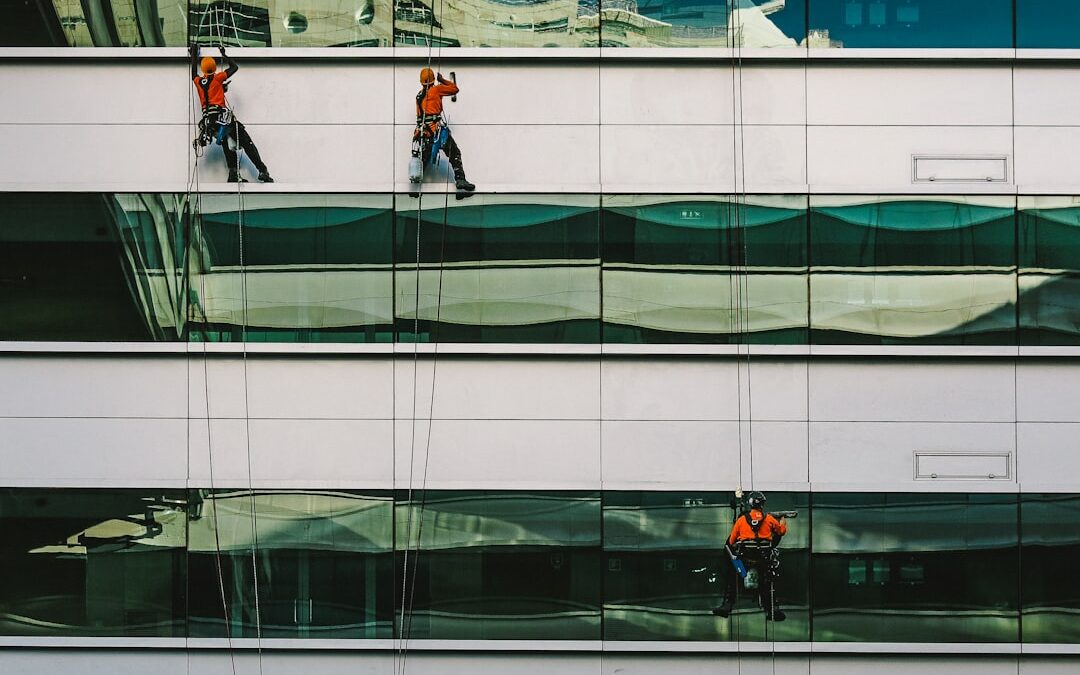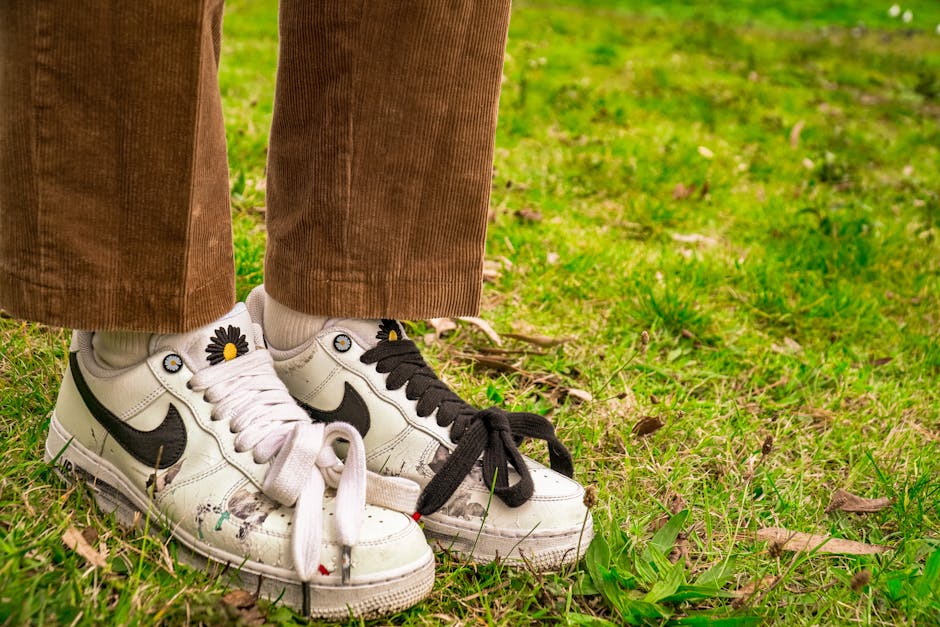When you notice mold on your footwear, it’s crucial to act fast. Here’s a straightforward approach to tackle the issue immediately:
– Identify the mold: Look for signs of fuzzy or slimy spots in various colors.
– Understand the cause: Excessive moisture and high humidity are the primary culprits.
– Start the removal: Gently clean the mold off with a mild detergent and a soft brush.
– Prevent future growth: Keep your shoes dry and well-ventilated to avoid mold recurrence.
Mold on footwear isn’t just unsightly—it can also damage your shoes and pose health risks. At NuShoe Inspect and Correct, we understand the urgency and inconvenience that mold presents to both shoe manufacturers and retailers. Our expertise has shown that the key to combating mold is prompt action and understanding its causes. High humidity and moisture are the breeding grounds for mold, making effective moisture management essential for prevention.
In the quest to keep your stock mold-free, every moment counts. Simple steps, such as ensuring that shoes are completely dry before storage and using dehumidifiers in storage areas, can make a significant difference. By maintaining optimal storage conditions and understanding the basics of mold prevention, you can protect your inventory and preserve the quality and reputation of your brand. Let’s dive deeper into understanding, preventing, and effectively removing mold from footwear, ensuring your products remain in top-notch condition.
Understanding Footwear Mold
When we talk about footwear mold, we’re diving into a topic that’s not just about unsightly spots on your shoes. It’s about understanding what’s really going on, the risks involved, and how it’s different from its close cousin, mildew.
Types of Mold
First off, mold comes in various types and colors, ranging from white and green to black and orange. But don’t let the colors fool you; they’re all eager to make a home in damp environments, including your favorite pair of shoes. The most common types you might find on your footwear are Aspergillus, Penicillium, and Cladosporium.
Health Risks
Mold isn’t just a cosmetic issue. It can pose serious health risks, especially for individuals with allergies, asthma, or compromised immune systems. Exposure to mold can lead to respiratory issues, skin irritation, and even more severe health problems over time. This makes understanding and tackling mold in your footwear not just a matter of shoe maintenance, but of personal health.
Mold vs. Mildew
Now, let’s clear up a common confusion: mold versus mildew. While both are fungi that thrive in moist environments, they’re not the same thing. Mold is typically black or green and has a fuzzy texture, indicating a deeper infestation. Mildew, on the other hand, appears as a white or gray powdery substance and often grows on the surface, making it easier to clean. When you spot that fuzzy or slimy texture on your shoes, you’re dealing with mold, which requires more than just a surface clean.
Understanding the type of infestation you’re dealing with is crucial for effective removal and prevention. Ignoring the problem or mistaking mildew for mold could allow the fungus to damage your shoes beyond repair and potentially harm your health.
With this knowledge in hand, you’re better equipped to protect your footwear and yourself from the unwanted advances of mold. Let’s move on to how you can prevent mold from taking over your shoes in the first place, keeping them fresh and ready for your next adventure.
Transitioning smoothly from understanding to action, our next section will delve into proven strategies for preventing mold on shoes. From the importance of proper storage to innovative solutions like dehumidifiers and shoe trees, you’ll learn how to create an environment where mold simply can’t thrive.
Preventing Mold on Shoes
After identifying mold and its causes, it’s crucial to take steps to prevent it from taking hold on your footwear. Let’s dive into some effective strategies:
Proper Storage
First and foremost, how and where you store your shoes plays a pivotal role in mold prevention. Avoid damp, dark places like basements or unventilated closets. Instead, opt for a cool, dry area with good airflow. Mold loves moisture and darkness, so by eliminating these conditions, you’re off to a good start.
Moisture Control
Keeping moisture at bay is your next line of defense. After wearing your shoes, especially on rainy days or if your feet tend to sweat, allow them to air out completely before storing them. This might mean leaving them in a well-ventilated area overnight or longer if needed. The goal here is to ensure that no residual moisture remains that could encourage mold growth.
Shoe Tree
Investing in shoe trees can be a game-changer. Not only do they help maintain the shape of your shoes, but they also absorb moisture and keep the interior of the shoe dry. Cedar shoe trees are particularly effective as cedar naturally absorbs moisture and has a pleasant scent that can help keep odors at bay.
Dehumidifiers
For those living in particularly humid climates, a dehumidifier can be a worthy investment. By reducing the overall humidity levels in your home or specifically in your shoe storage area, you significantly reduce the risk of mold growth. Small, portable dehumidifiers can be placed in closets or wherever you store your shoes to help keep the air dry.
Moth/Water Repellents
Lastly, consider using moth and water repellents. While primarily known for keeping pests away, some repellents also offer the added benefit of reducing moisture. For leather shoes, a water-repellent spray can provide a protective barrier against moisture. Just be sure to choose a product that’s suitable for the material of your shoes to avoid any damage.
By implementing these strategies, you create an unwelcoming environment for mold. It’s about taking proactive steps to ensure your shoes remain dry, well-ventilated, and properly stored. Prevention is always better than cure, and by following these guidelines, you’re well on your way to keeping your footwear mold-free.
Transitioning from prevention to action, let’s explore Effective Mold Removal Techniques in the next section, where we’ll cover everything from vinegar solutions to the importance of avoiding direct sunlight during the drying process.
Effective Mold Removal Techniques
When it comes to dealing with footwear mold, the right approach can make all the difference. Let’s dive into some proven strategies to tackle this issue effectively.
Vinegar Solution
A simple yet powerful tool in your mold-fighting arsenal is a vinegar solution. Mix equal parts of water and white vinegar in a spray bottle. This blend is excellent for killing mold spores thanks to vinegar’s natural acidity. It’s safe for most shoe materials, including leather and canvas.
Cloth/Sponge Application
Once you’ve prepared your vinegar solution, grab a clean cloth or sponge. Dampen it with the mixture and gently wipe down the affected areas of your shoes. Be thorough, but remember not to soak the material. For tougher mold spots, a soft-bristled brush can help break up the mold without damaging your shoes.
Air Drying
After cleaning, it’s crucial to let your shoes air dry completely. Moisture is mold’s best friend, so ensuring your shoes are dry is key to preventing future growth. Place them in a well-ventilated area away from direct heat sources. Stuffing your shoes with newspaper can absorb moisture and help maintain their shape during drying.
Direct Sunlight Avoidance
While it might seem like a good idea to speed up the drying process with sunlight, direct exposure can actually do more harm than good. Sunlight can fade the color of your shoes and cause materials, especially leather, to crack and dry out. It’s best to dry your shoes in a shaded, breezy spot.
By following these Effective Mold Removal Techniques, you can say goodbye to pesky mold and hello to fresh, clean shoes. Tackling mold early and effectively can save your favorite pairs from being ruined. Keep these tips in mind, and you’ll be well-equipped to handle any mold situation that comes your way.
Next, we’ll explore Special Considerations for Different Materials to ensure your mold removal efforts are as effective and safe as possible for every type of shoe in your closet.
Special Considerations for Different Materials
When dealing with footwear mold, it’s crucial to consider the material of your shoes. Different materials require unique care methods to ensure effective mold removal without damaging the shoe. Let’s dive into the specifics:
Leather Care
Leather is a durable yet sensitive material. For mold removal, a mixture of water and vinegar (equal parts) works well. Gently apply the solution with a soft cloth, but be sure not to soak the leather. Afterward, allow the shoes to air dry away from direct heat or sunlight to prevent cracking. Conditioning the leather post-cleaning keeps it supple and prevents future mold growth.
Suede Handling
Suede requires a delicate touch. Avoid water-based cleaning methods as water can damage the texture. Instead, use a suede brush to gently remove the mold. For persistent mold, a small amount of vinegar on a soft cloth might help, but test on an inconspicuous area first. After cleaning, brushing with a suede brush restores its natural look.
Canvas Cleaning
Canvas shoes are more forgiving. A solution of soap and water, applied with a soft brush, can remove most mold spots. Rinse with a clean, damp cloth and let them air dry. For stubborn mold, adding vinegar to the cleaning solution can help. Ensure the shoes are thoroughly dry before wearing them again to prevent mold from returning.
Silicone Tray with Molds
If you’re using silicone molds for crafting or baking, like those mentioned for creating shoe-shaped chocolates, mold can also be a concern. Clean these molds with warm, soapy water and let them air dry. For tough mold spots, a baking soda paste left on for a few hours before washing can work wonders. Always ensure the molds are completely dry before storage.
Each material requires a different approach, but the key across all is ensuring your shoes or molds are dry and well-maintained after cleaning. Regular checks for moisture and mold can save your favorite pairs from irreversible damage. With these tips, tackling footwear mold on various materials becomes a manageable task.
Moving on, let’s address some FAQs on Footwear Mold to clear up common confusions and provide you with the knowledge to keep your shoes in top condition.
FAQs on Footwear Mold
Why is mold growing on my shoes?
Mold loves moisture and warmth, making your shoes a perfect home if conditions are right. Here are a few reasons why mold might be throwing a party on your footwear:
- Sweaty Feet: It’s natural for feet to sweat, but when shoes don’t get a chance to dry out properly, mold sees an opportunity.
- Wet Conditions: Walking through puddles or getting caught in the rain without properly drying your shoes can invite mold.
- Dry Rot: This might sound counterintuitive, but dry rot is a type of fungal growth that occurs on leather when it’s been wet and then improperly dried, causing the leather to crack and become more susceptible to mold.
How do you get rid of mold on shoes?
Getting rid of mold doesn’t have to be a herculean task. Here’s a simple, effective way to reclaim your shoes:
- Vinegar Solution: Mix equal parts water and white vinegar. This solution is your first line of defense against mold.
- Thorough Wiping: Using a cloth or sponge, apply the vinegar solution to the affected areas. Be generous but don’t soak the shoe.
- Air Drying: Let your shoes dry in a well-ventilated area but avoid direct sunlight, which can damage the material.
What is the mold used by shoemakers called?
In the shoemaking world, the “mold” isn’t what you’re trying to clean off your shoes. It’s called a Last. This mechanical form, shaped like a human foot, is crucial in shoe manufacture. It ensures that the shoe has the right shape and size. Traditionally made from wood, but nowadays, also from plastics, a last can be considered the foundation of a well-made shoe.
Shoe manufacture relies on these lasts to not only give shape but also to provide consistency across sizes. Whether it’s a sneaker or a high-heeled shoe, the last plays a pivotal role in the final product’s comfort, fit, and style.
In summary, whether it’s battling footwear mold due to sweaty feet, wet conditions, or dry rot, or understanding the tools of the trade like the last, keeping your shoes mold-free and well-cared for ensures their longevity and your comfort. Regular checks for moisture and mold can save your favorite pairs from irreversible damage.
Conclusion
We’ve journeyed through the murky waters of footwear mold, uncovering its causes, risks, and most importantly, how to combat it. At this point, it’s clear that while prevention is key, sometimes mold finds a way. That’s where NuShoe Inspect & Correct steps in.
NuShoe Inspect & Correct isn’t just another shoe repair company. Since 1994, we’ve been at the forefront of quality control and mold removal services for footwear. Our experience speaks for itself, but it’s our dedication to restoring your shoes to their former glory that sets us apart.
Our process isn’t a secret, but the care we put into it might as well be. From the moment your shoes arrive, they’re treated with the utmost respect. We understand the value—both monetary and sentimental—that your footwear holds. That’s why our mold removal services are designed to be as thorough as they are gentle, ensuring your shoes come back to you in the best condition possible.
But why choose us? Beyond our years of experience, we offer a comprehensive approach to footwear mold. Whether it’s leather, suede, or canvas, our team knows exactly how to handle different materials to get the best results. Our services aren’t just about removing mold; they’re about restoring your shoes’ quality and extending their life.
Quality control is at the heart of what we do. Every shoe that passes through our hands is subject to a rigorous inspection process, ensuring no detail is overlooked. It’s this meticulous attention to detail that has made us a trusted partner for footwear manufacturers and retailers alike.
In conclusion, tackling footwear mold can seem daunting, but with NuShoe Inspect & Correct, it doesn’t have to be. Our blend of experience, dedication to quality, and comprehensive services make us the go-to solution for anyone looking to rescue their cherished footwear from the clutches of mold. Don’t let mold win; let us help you bring your shoes back to life.
Ready to say goodbye to mold and hello to fresh, clean shoes? Let NuShoe Inspect & Correct take care of it.
Battling footwear mold due to sweaty feet, wet conditions, or dry rot, or understanding the tools of the trade like the last, keeping your shoes mold-free and well-cared for ensures their longevity and your comfort. Regular checks for moisture and mold can save your favorite pairs from irreversible damage.




